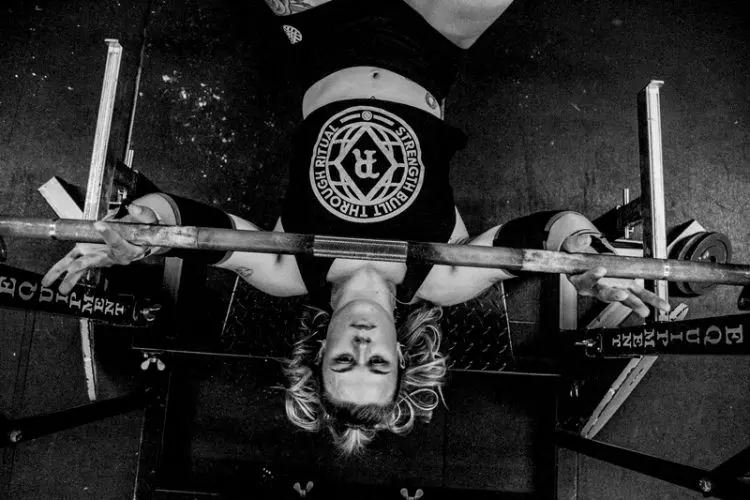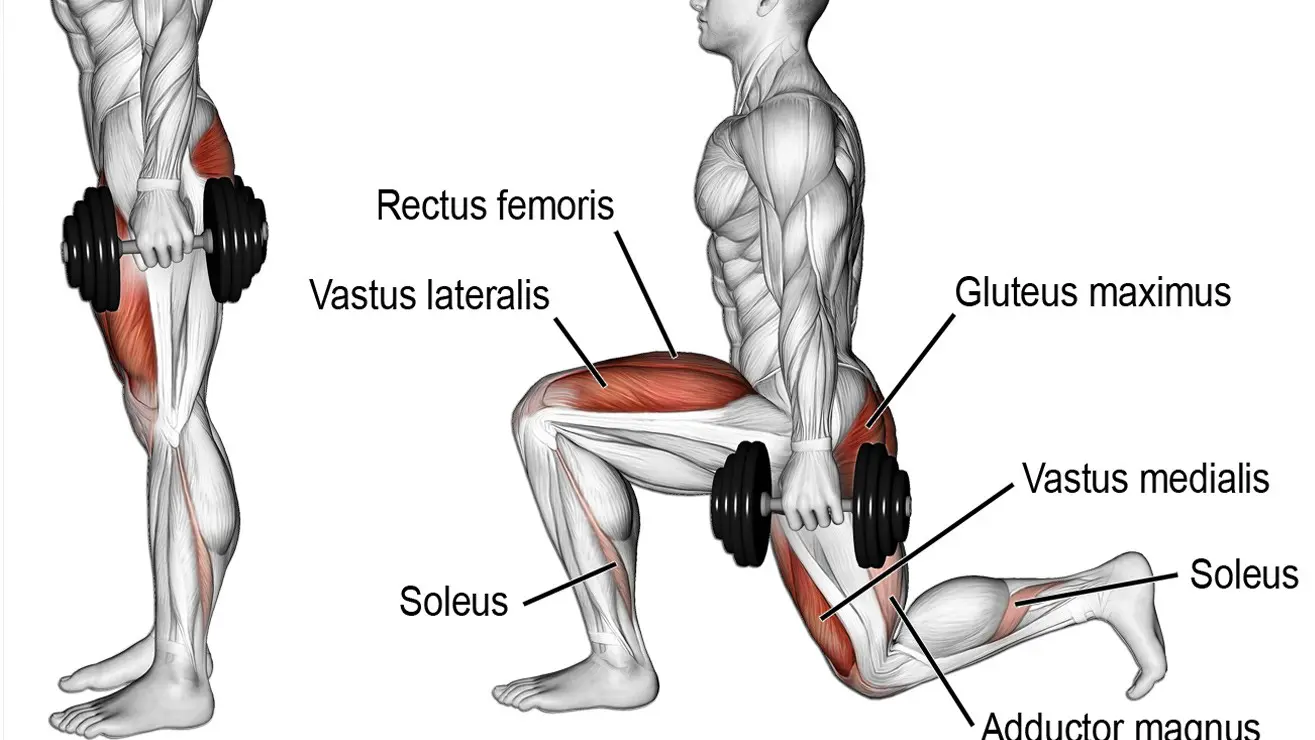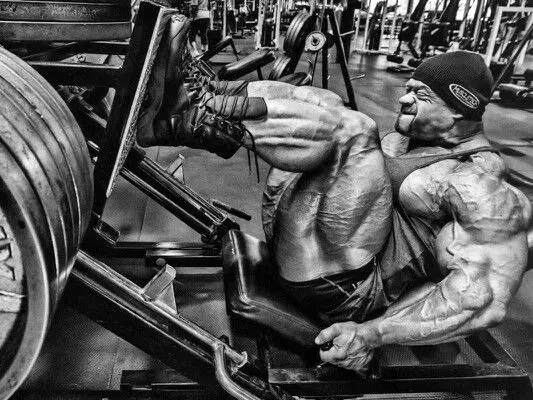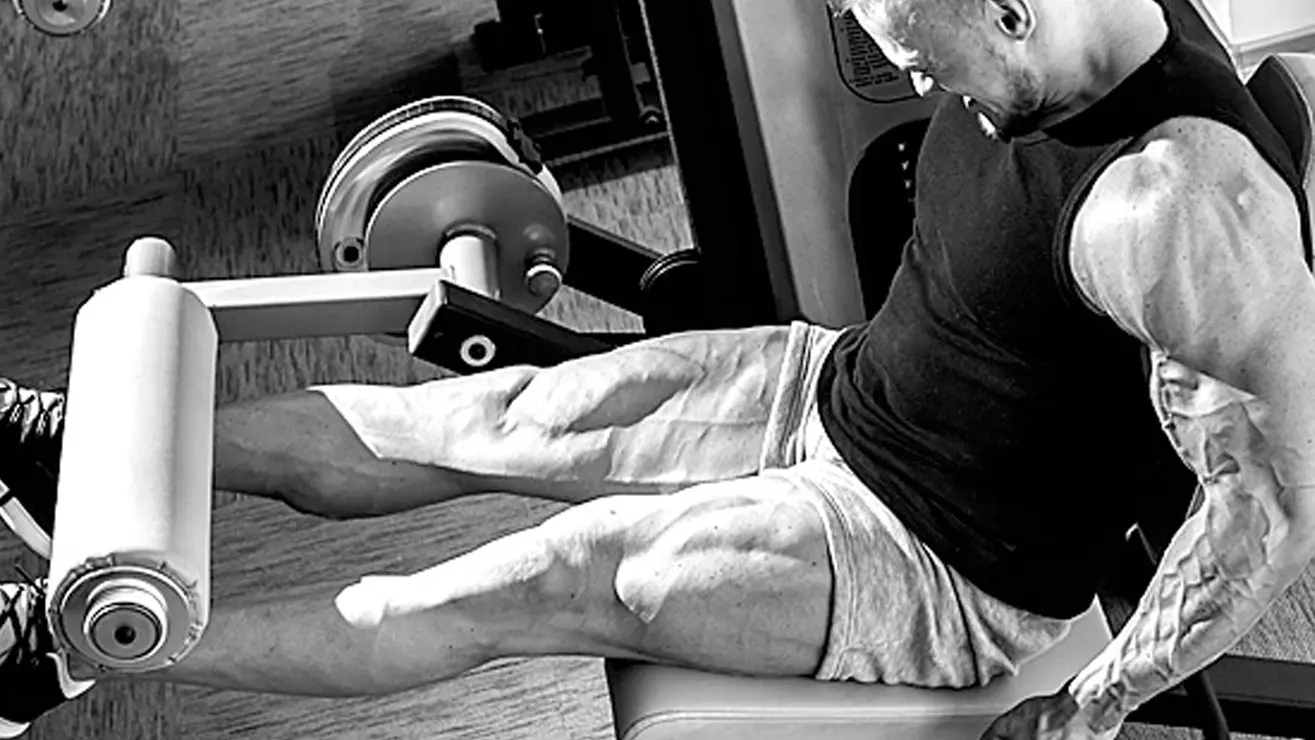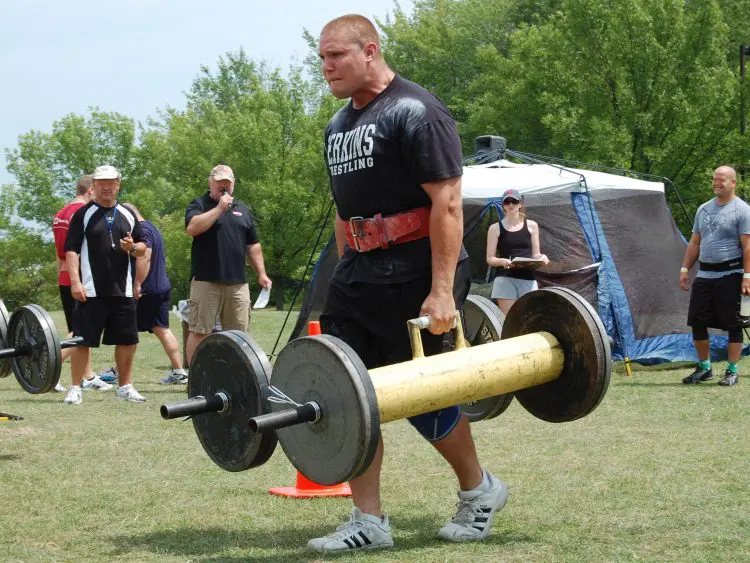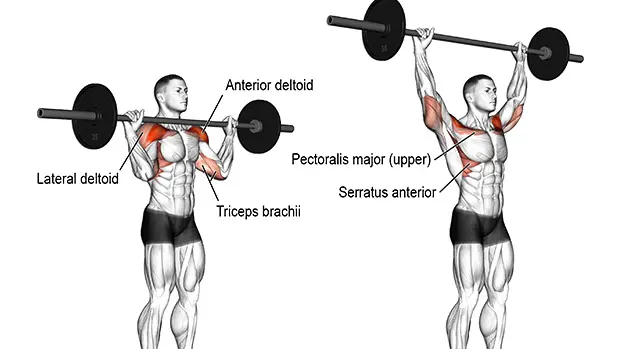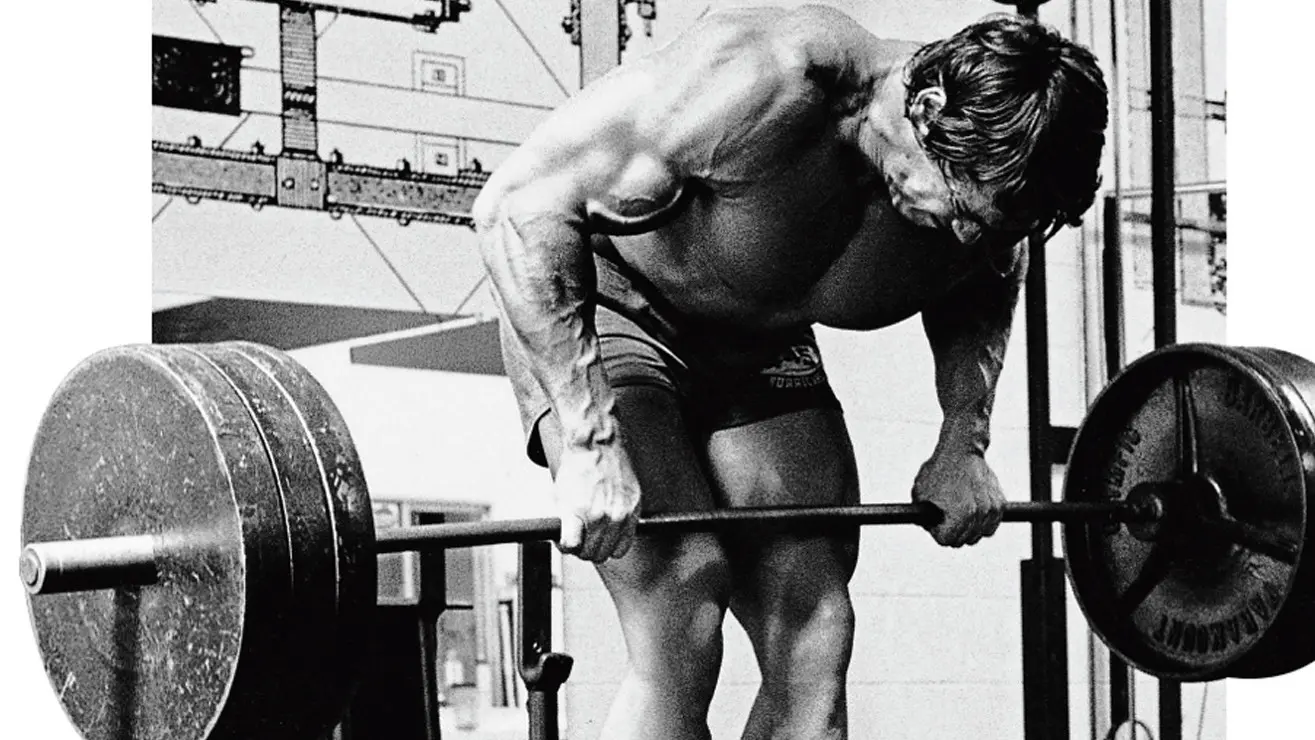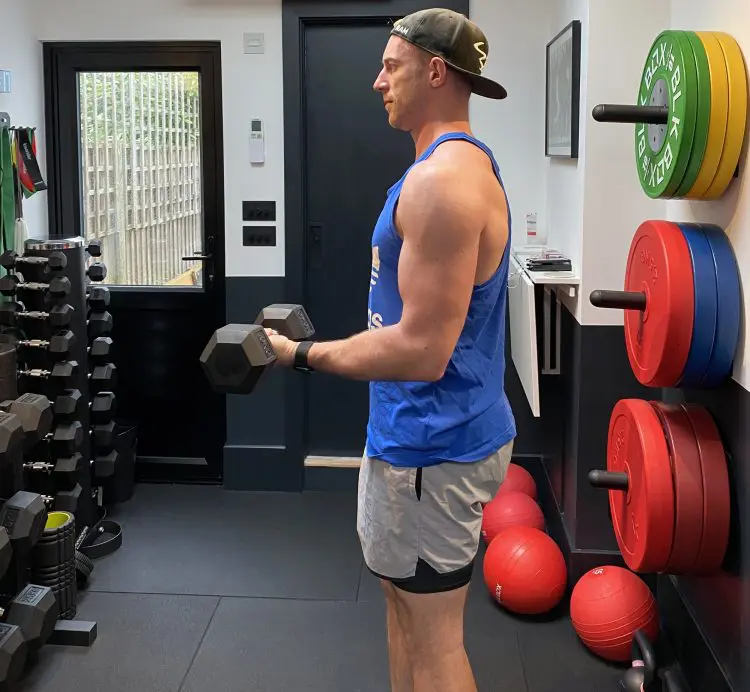While there are a number of factors that can influence your powerlifting performance, the physical training you engage in is undoubtedly of the greatest significance.
To allow you to make the best possible progress with your strength, this article will highlight fifteen key exercises that you should look to incorporate into your training.
Doing so will allow you to develop significant strength to ideally be successful when it eventually comes to competing.
The Three Powerlifts
It goes without saying, but the lifts that you perform in competition must be the foundation of all training sessions. Your training sessions should focus on the squat, bench press, and deadlift.
You must practice these exercises frequently to help you develop your strength and powerlifting performance.
However, as a beginner, you don’t always need to do super heavy work. There is benefit in using lighter loads too; this will allow you to spend time on and refine your techniques.
Level Up Your Fitness: Join our 💪 strong community in Fitness Volt Newsletter. Get daily inspiration, expert-backed workouts, nutrition tips, the latest in strength sports, and the support you need to reach your goals. Subscribe for free!
This will cover the three powerlifts, explain the muscles they primarily work, and also provide a technique breakdown for each lift.
1) Squat
Although the squat can really be seen as a full-body exercise, the primary muscles that cause and control the movement are the glutes, quadriceps, adductors, and core (1).
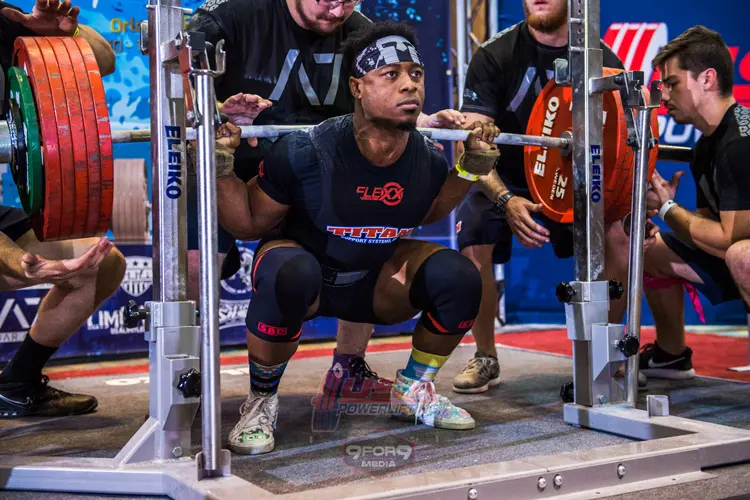
When performing this exercise in training, check your depth. In a powerlifting competition, you must squat down until the thigh is parallel with the floor for it to pass.
If you are having issues reaching the correct depth you may need to spend some time working on your technique and/or mobility.
Squat Technique:
- Set-up in the rack ensuring that the bar just under shoulder height
- Place your hands on the bar at slightly wider than shoulder-width and position the feet under the bar
- Drop under the bar and place it upon the upper back ensuring that it sits just above the shoulder blades
- Drive the chest up and brace the core before unracking the bar and taking a couple of steps back
- For the stance, place your feet slightly wider than hip-width with the toes slightly turned out
- While maintaining a core brace, drop backside down by simultaneously hinging the hips and bending the knee
- Control the descent until the thighs are parallel to the floor
- Once this point has been reached, drive the feet hard into the floor to powerfully extend the hips and knees and return to standing
[Related: Enhancing Squat Performance With The Smolov Squat Program]
2) Bench Press
The bench is commonly seen as solely an upper body exercise, however, this is simply not the case.
While it is the pectorals, triceps, and deltoids that are responsible for driving the movement (2), you must also look to engage the core and the muscles in the lower extremities.
To do this most effectively, you should push into the floor with the feet. Doing so will cause an increase in stability and will facilitate a better lift.
Bench Press Technique:
- Lie back on the bench and align your eyes with the barbell
- Position your feet under your hips about hip-width apart
- Place your hands on the bar at slightly wider than shoulder-width
- Drive the chest up, engage the core, squeeze the glutes and push your feet into the floor
- Unrack the bar and bring it over the chest
- Begin to lower the bar by hinging the elbows ensuring that they stay under the line of the shoulders
- Continue the descent until the bar makes contact with the lower chest (aiming for the nipple line)
- Pause for a moment while maintaining tension through the core and the glutes
- Powerfully press the bar up to the starting position
[Related: 6 Bench Press Programs For A Big Powerful Chest]
3) Deadlift
The deadlift is a superb exercise that develops the posterior chain. This term refers to all of the muscles found to the rear of the body. In particular, the deadlift will target the glutes, hamstrings, erector spinae, lats, and an array of deep core muscles (3).
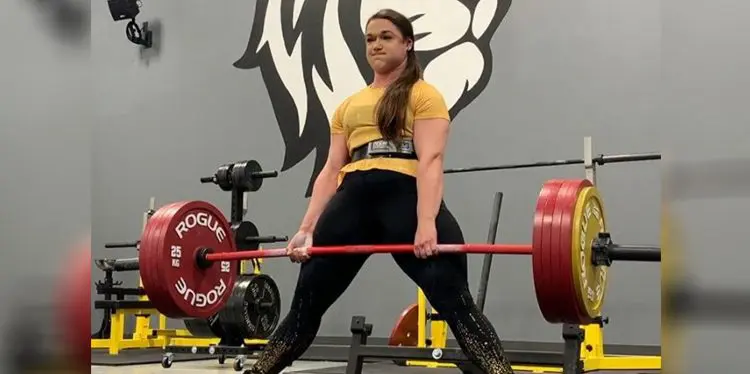
In powerlifting, there are two permitted types of the deadlift – the conventional deadlift or the sumo deadlift. The main difference between these two is in regard to the stance that is used.
Deadlift Technique:
- For the conventional style, begin with the feet directly under the bar at approximately hip-width apart with the toes turned out very slightly
- For the sumo, place the feet much wider than hip-width and point the toes out to approximately 45 degrees
- Reach down to the bar and grasp it using a shoulder-width grip
- Lift the chest and brace the core
- While maintaining this brace, powerfully extend the through the hips and knees to lift the bar from the floor
- As the bar rises ensure that it stays tight to the body throughout the entirety of the movement
- Ensure that you finish strongly by fully extending the hips and the knees – this is best done by squeezing the glutes and the quadriceps
- Once again, keep the bar close to the body as you reverse the movement and return the bar to the floor
[Related: Three Deadlift Workout Programs To Enhance Strength and Performance]
Accessory Exercises
This section will run through a number of high-quality strength exercises that you can use to help improve your strength and facilitate performance with the three powerlifts.
4) Lunges
The lunge can help to develop single-leg strength and facilitate an improved performance with the squat.
There are a number of lunging variations such as the static, forward, backward, lateral, and walking lunge, all of which have their unique benefits and uses.
Walking Lunge Technique:
- Grasp dumbbells and hold them by the hips or place a barbell on the upper back
- Position the feet under the hips with toes pointed forward
- Lift the chest up and engage the core
- Take a step forward and simultaneously bend at both knees
- Drop the back knee down to the floor
- Drive through the front leg to stand
- Alternate sides and repeat
[Related: How To Do The Dumbbell Lunge]
5) Leg Press
The leg press is a machine-based exercise that will allow you to shift very heavy weight. This is significant when considering that heavy weight is most key for effective strength development (4).
The movements of both the leg press and the squat are similar. Therefore, incorporating the leg press into your training can have a substantial impact on your squatting performance.
Leg Press Technique:
- Begin by placing the feet on the platform at slightly wider than hip-width
- Ensure that the back is fully in contact with the pad
- Lift the chest and engage the core
- In a controlled manner, bend the knees to lower the platform towards the body
- Powerfully press the platform away until the legs are almost fully extended
[Related: Leg Press Exercise Guide – Muscles Worked, How-To, Benefits, Tips And Variations]
6) Leg Extensions
The leg extension is an isolation exercise that specifically works the quadriceps. These are the muscles that are responsible for extending the knees.
Level Up Your Fitness: Join our 💪 strong community in Fitness Volt Newsletter. Get daily inspiration, expert-backed workouts, nutrition tips, the latest in strength sports, and the support you need to reach your goals. Subscribe for free!
Improving the strength of the quads will have a knock-on impact on other exercises that involve knee extension, such as the squat and the deadlift.
Leg Extensions Technique:
- Adjust the machine and ensure that the pivot point aligns with the middle of the knee
- Bring the upper pad down so that it is tight to the upper thighs
- Ensure that the lower pad is positioned correctly – it should sit on the lower shin
- Drive the chest up and engage the core
- Powerfully extend the knee to straighten the legs entirely
- In a controlled manner, reverse the movement to return to the starting position
7) Leg Curls
In the same way that the leg extension targets the quads, the leg curl focuses on hamstring development.
The hamstrings are heavily involved in the deadlift, therefore, the leg curl can help to facilitate an improved performance with this lift in particular.
Leg Curl Technique:
- Adjust the machine and ensure that the pivot point aligns with the middle of the knee
- Bring the upper pad down so that it is tight to the upper thighs
- Ensure that the lower pad is positioned correctly – it should sit on the lower calf
- Drive the chest up and engage the core
- Powerfully flex at the knees and focus on pulling your heels towards your backside
- Reverse the movement and straighten the legs in a controlled manner
8) Farmers Walk
When it comes to building core and grip strength, there are few exercises that can compare to the farmers walk.
The combination of heavy weight and instability places a huge demand on the core causing it to adapt. Developing core strength in this way can enhance performance across all three powerlifts.
Farmers Walk Technique:
- Start with weight on the floor in front of you
- Bend down and grasp the weight
- Engage your core and lift the chest before standing
- From there, walk with the weight in hand for a designated distance
- As you walk, ensure that you remain stable by maintaining a core brace
[Related: Farmer’s Walk Guide: How-To, Muscles Worked, Variations, and Benefits]
9) Overhead Press
One of the best accessory exercises for the bench press is the overhead press. This exercise targets the deltoids and pectorals which are the muscles also used in the bench press.
Furthermore, this exercise can also improve core strength and stability. In order to hold the weight in a stable position overhead, the core must remain braced.
Overhead Press Technique:
- Set up with the bar in the rack at approximately shoulder height
- Grasp the bar using a grip that is slightly wider than shoulder-width
- Engage the core and drive the chest up
- Lift the bar from the rack and take a step back before assuming a hip-width stance
- Powerfully drive the bar upward until the bar is directly overhead
- Lower the bar back to the upper chest in a controlled fashion
[Related: How To Do Seated Barbell Overhead Press]
10) Bent Rows
For developing upper body pulling strength, look no further than the bent row. This exercise will help to develop the lats which play a key role in the deadlift.
Therefore, performing the bent row on a regular basis can help to develop your overall pulling strength and deadlift performance.
Technique:
- Begin with the feet at hip-width
- Reach down and grasp the bar using a grip that is slightly wider than shoulder-width
- Drive the chest up and engage the core before standing with it
- Push the hips back and allow the trunk to tip forward so that the bar lowers to the knees
- Powerfully pull the bar into the midriff and squeeze the shoulder blades together
- Return the bar to the knees while maintaining control
11) Lat Pulldown / Pull-Ups
In a similar fashion to the bent row, the lat pulldown can also help to improve overall pulling strength and facilitate deadlift performance.
The movements of the lat pulldown and pull-up are practically identical, therefore, the pull-up can also be used for this purpose if preferred.
Lat Pulldown Technique:
- Start by adjusting the machine to ensure that pads sit tightly to the thighs
- Stand up and grasp the bar using a grip that is wider than shoulder-width
- Drive the chest up and squeeze the core before sitting down
- Pull the bar directly down until it makes contact with the upper chest
- Fully extend the elbows to return the bar to the starting position
12) Bicep Curls & Tricep Extensions
The biceps and triceps are the muscles of the upper arm. While these muscles are relatively small, improving their strength and size can be beneficial.
Enhancing bicep strength will help with your pulling exercises (bent row and lat pulldown) while the triceps extension will enhance pushing exercises (bench and overhead press).
Bicep Curl Technique:
- Grasp the weights and hold them by the hips
- Lift the chest and engage the core
- Flex at the elbows to bring the weight up towards the shoulders
- Ensure that the elbows stay tight to the sides as you move
- In a controlled fashion, fully straighten the arms and return to the start
Tricep Extensions Technique:
- Grasp the weight and hold it directly overhead with the arms extended
- Lift the chest and engage the core
- Flex at the elbows to drop the weight up down behind your head
- Ensure that you are moving through the elbow joints only
- Powerfully extend the elbow joint to return the weight to the overhead position
Final Word
If you want to optimize your strength and powerlifting performance, it’s crucial that your training program revolves around the three powerlifts – the squat, bench, and deadlift.
When it comes to selecting accessories, ensure you make smart choices, and select exercises that will facilitate an improved performance with your powerlifts.
While your physical training is one of the most important, there are a number of other factors that you need to consider as a beginner powerlifter. Find out more in “The Ultimate Powerlifting Guide For Beginners“.
References:
1 – Caterisano, Anthony; Moss, Raymond F.; Pellinger, Thomas K.; Woodruff, Katherine; Lewis, Victor C.; Booth, Walter; Khadra, Tarick (2002-08). “The effect of back squat depth on the EMG activity of 4 superficial hip and thigh muscles”. Journal of Strength and Conditioning Research. 16 (3): 428–432. ISSN 1064-8011. PMID 12173958
2 – Stastny, Petr; Gołaś, Artur; Blazek, Dusan; Maszczyk, Adam; Wilk, Michał; Pietraszewski, Przemysław; Petr, Miroslav; Uhlir, Petr; Zając, Adam (2017-02-07). “A systematic review of surface electromyography analyses of the bench press movement task”. PLoS ONE. 12 (2). doi:10.1371/journal.pone.0171632. ISSN 1932-6203. PMC 5295722. PMID 28170449.
3 – Martín-Fuentes, Isabel; Oliva-Lozano, José M.; Muyor, José M. (2020-02-27). “Electromyographic activity in deadlift exercise and its variants. A systematic review”. PLoS ONE. 15 (2). doi:10.1371/journal.pone.0229507. ISSN 1932-6203. PMC 7046193. PMID 32107499.
4 – Schoenfeld, Brad J.; Contreras, Bret; Vigotsky, Andrew D.; Peterson, Mark (2016-12-01). “Differential Effects of Heavy Versus Moderate Loads on Measures of Strength and Hypertrophy in Resistance-Trained Men”. Journal of Sports Science & Medicine. 15(4): 715–722. ISSN 1303-2968. PMC 5131226. PMID 27928218.

